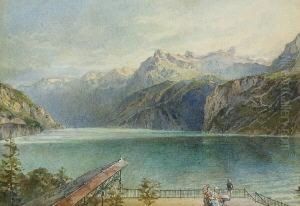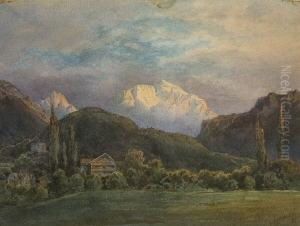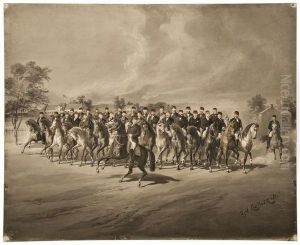Theodor August Liebler Paintings
Theodor August Liebler was an American artist born in 1855, whose work spanned the late 19th and early 20th centuries. Liebler's career is marked by his versatility, dabbling in various mediums including painting, etching, and illustration. Despite this range, he is most often celebrated for his contributions to American illustration, an area in which he excelled and left a lasting impact.
Liebler grew up in a time when the United States was undergoing significant cultural and technological changes. These transformations, coupled with the country's expanding landscapes and diverse populations, provided a rich tapestry for Liebler’s artistic explorations. He was known to have a keen interest in Native American culture, which became a recurring theme in his work. Liebler's illustrations often depicted Native American life with a sensitivity and detail that were uncommon for his time, contributing to a nuanced portrayal of these communities.
After completing his formal education, Liebler refined his artistic skills through travel and study abroad, a common practice among artists of his era. Europe, with its rich artistic traditions and institutions, offered him exposure to a wide range of artistic styles and techniques. This experience broadened his artistic perspective and influenced his later work. Upon returning to the United States, Liebler integrated these influences into his art, contributing to the diversity of American artistic expression during a period of burgeoning national identity.
In addition to his work on Native American themes, Liebler was an accomplished landscape artist. His landscapes, often infused with a sense of tranquility and a deep appreciation for the natural world, reflect the broader trends of American landscape painting of the period. These works, characterized by their attention to detail and atmospheric effects, added to his reputation as a skilled artist.
Throughout his career, Liebler also engaged in illustration, contributing to books and periodicals. His illustrations were notable for their narrative quality, effectively complementing the texts they accompanied. This work, alongside his paintings and etchings, demonstrates Liebler's adaptability and skill across different mediums.
Theodor August Liebler passed away in 1934, leaving behind a body of work that remains of interest to art historians and collectors. His contributions to American art, particularly in the areas of illustration and landscape painting, reflect the dynamic cultural landscape of his time. Although not as widely known today as some of his contemporaries, Liebler's art continues to be appreciated for its technical skill and expressive depth.


